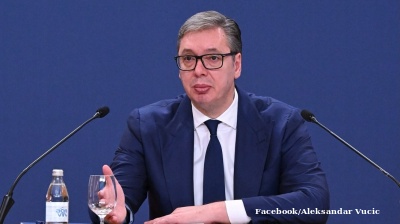The following is an extract from the World Bank’s Europe and Central Asia Economic Update, “WAR IN THE REGION” economic forecast released on April 10.
Ukraine’s economy expanded by 3.4% in 2021 as easing COVID restrictions supported domestic demand, and a bumper harvest offset drags from higher global energy prices and a faster fiscal consolidation.
The external position was relatively robust, with gross reserves at $30.9bn, and a small current account deficit of 1.1% of GDP. This recovery was upended by the onset of war in February 2022, which has fully disrupted maritime trade (this amounted to half of the total trade and 90% of grain trade), heavily damaged critical infrastructure and triggered a massive displacement of people.
Access to external capital markets remains closed, with Eurobond spreads peaking at over 50% in early March. A large fiscal financing gap has opened amid a rapidly widening fiscal deficit (due to growing spending needs and declining revenues) and large debt repayments. Tax revenues are expected to drop sharply due to the economic impacts of the war, as well as tax deferrals announced for key business, land and municipal taxes and the shift to a 2% turnover tax. In response, international partners have provided substantial funding through grants, loan guarantees and currency swap lines alongside major financing packages by the IMF, EU, World Bank and some bilaterals. Bond spreads have since dropped 15% percentage points to just above 30% as of April 10.
Compared to the 2014-15 crisis, the banking system is more resilient but faces heightened operational, liquidity and solvency risks. In addition to capital and exchange controls, the central bank has established a new liquidity facility and introduced regulatory forbearance measures to support financial stability. FX reserves stood at $27.5bn (3.8 months of current imports as of March 1). Inflation was stable at an average of 10% in the 8 months leading up to the war; regulated utilities prices and the introduction of price caps on essential consumer goods may restrain inflationary pressures in the short term.
Outlook
Projections, given the ongoing conflict, are subject to great uncertainty and large downside risks. In the baseline, assuming that war continues for several more months (albeit remains contained to the geographical areas where it is currently occurring), a 45% GDP contraction is anticipated in 2022. This is predicated on massive declines in imports and exports given trade disruptions, a collapse in public and private investments and a large drop in household spending reflecting the large displacements of people, loss of incomes and livelihoods. In coming years, a major reconstruction effort is expected to push growth to over 7% by 2025 amid a slow restoration of productive and export capacity and gradual return of refugees. Still, by 2025, GDP will be a third less than its pre-war level in 2021.
After a significant widening, the non-primary fiscal deficit is expected to narrow over the medium term as gradual fiscal consolidation and cuts to non-essential spending offset increased public investment.
The current account should remain constrained by sizable domestic import compression in the near term but will widen in 2023 and 2024 due to reconstruction-related investment imports (amid domestic supply constraints).
The poverty and social impacts of the war will be massive. Simulations using the most recent macroeconomic projection show that the share of the population with incomes below the actual subsistence minimum (the national poverty line) may reach 70% in 2022, up from 18% in 2021. In the absence of a massive post-war support package, this indicator would still be higher than 60% by 2025. Based on the international upper middle-income poverty line ($5.5 a day), poverty is projected to increase to 19.8% in 2022, up from 1.8% in 2021, with an additional 59% of people being vulnerable to falling into poverty.

Opinion

COMMENT: Sanctions on Rosneft and Lukoil are symbolic and won’t stop its oil exports
The Trump administration’s sanctions on Russian oil giants Rosneft and Lukoil, announced on October 22, may appear decisive at first glance, but they are not going to make a material difference to Russia’s export of oil, says Sergey Vakulenko.

Armenia’s painful reorientation toward the West
Yerevan’s drive to break free from its dependency on Moscow is generating profound internal political turbulence and exposing it to new external risks, says a report by the Central Asia‑Caucasus Institute & Silk Road Studies Program.

COMMENT: Europe’s “fake it till you make it” war approach cannot hold off Russia’s trillion dollar war machine
In their speeches on the war in Ukraine, European leaders appear like a video clip looped on repeat. Standing before the cameras they declare new packages of support for Kyiv and threaten new measures to pressure Russia as if it was still 2022.

A year after the Novi Sad disaster, Belgrade faces one crisis after another
Serbia’s government is grappling with a convergence of crises which threaten to erode President Aleksandar Vucic’s once-dominant position.


